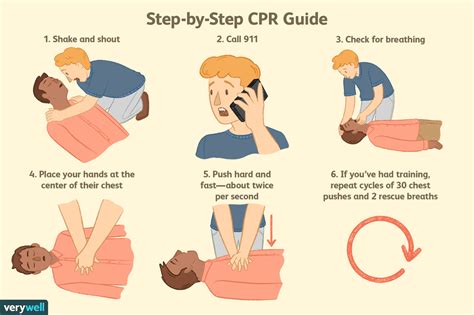How To Perform CPR: A Life-Saving Guide
Cardiopulmonary resuscitation (CPR) is a life-saving technique that can help someone who has stopped breathing or has a sudden cardiac arrest. Knowing how to perform CPR could mean the difference between life and death. This guide provides a comprehensive overview of the steps involved, but remember this is not a replacement for a certified CPR course. Formal training is crucial for mastering the skills and handling various situations effectively.
Understanding the Basics of CPR
Before diving into the steps, it's essential to understand the core components of CPR:
- Chest Compressions: These are forceful pushes on the chest to circulate blood artificially.
- Rescue Breaths: These breaths help oxygenate the blood.
- Early Recognition: Recognizing the signs of cardiac arrest (unresponsiveness, absence of breathing or abnormal breathing) is the first and most critical step.
Steps to Perform CPR on an Adult
1. Check for Responsiveness: Gently shake the person and shout, "Are you okay?"
2. Call for Help: If the person is unresponsive, immediately call your local emergency number (911 in the US, 999 in the UK, etc.) or have someone else do it.
3. Check for Breathing: Look, listen, and feel for normal breathing for no more than 10 seconds. Gasping is not considered normal breathing.
4. Start Chest Compressions: * Hand Placement: Place the heel of one hand in the center of the person's chest (between the nipples). Place the other hand on top, interlacing your fingers. * Body Position: Keep your arms straight and position your shoulders directly over your hands. * Compression Depth and Rate: Push hard and fast, compressing the chest at least 2 inches (5 cm) deep and at a rate of 100-120 compressions per minute. Allow the chest to fully recoil between compressions.
5. Rescue Breaths (Optional for untrained bystanders): Many CPR guidelines now emphasize continuous chest compressions for untrained bystanders. However, if you are trained and comfortable performing rescue breaths, give two rescue breaths after every 30 chest compressions. Ensure a proper seal over the person's mouth and nose.
Steps to Perform CPR on a Child
The procedure for children (ages 1-8) is similar, but with some key differences:
1. Check for Responsiveness and Call for Help: Same as for adults.
2. Check for Breathing: Same as for adults.
3. Start Chest Compressions: Use the heel of one hand for infants and children under 8. For older children, the technique is similar to adult CPR. Compression depth should be about 2 inches for children, and about 1.5 inches for infants.
4. Rescue Breaths: If trained, perform rescue breaths after every 30 compressions. Adjust the breath volume to avoid overinflation.
CPR on an Infant (Under 1 Year Old)
CPR for infants requires modifications in hand placement and compression technique:
-
Hand Placement: Use two fingers for compressions, placed on the breastbone just below the nipple line.
-
Compression Depth and Rate: The chest should be compressed approximately 1.5 inches deep, at a rate of 100-120 compressions per minute.
-
Rescue Breaths: If trained, provide rescue breaths, ensuring a proper seal over the nose and mouth.
Important Considerations
-
Hands-Only CPR: For untrained bystanders, hands-only CPR (chest compressions only) is highly effective and recommended.
-
AED Use: If an Automated External Defibrillator (AED) is available, use it as soon as possible. Follow the AED's voice prompts.
-
Continuous CPR: Continue CPR until professional help arrives or the person shows signs of life.
This information is for educational purposes only and should not replace formal CPR training. Enroll in a CPR course to learn proper techniques and gain confidence in this life-saving skill. You can find courses offered by organizations such as the American Heart Association and the American Red Cross. Saving a life is a rewarding experience, and knowing CPR can empower you to make a difference.
